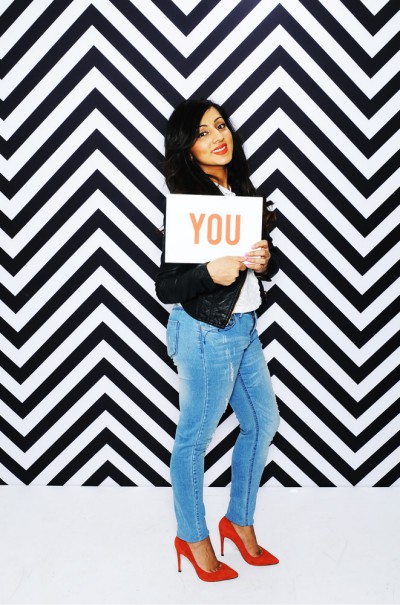The Ugly Truth about Beauty
Nandip Aulak
Ideas of beauty, like fashion trends, change over time. However, one thing that remains constant is the desire to fit in and be considered attractive or normal.
The idea of what is beautiful has changed significantly over the years, but what influences these changes? In fashion, iconic designers introduce new ideas that change how we dress; such as Coco Chanel, who gave us the 'little black dress' - now a staple item for women around the world.
 The beauty parade…
The beauty parade…
Advertisers, models and celebrities define how we think about beauty, and always have. In the 50's Marilyn Monroe set the world on fire, with her curves and glamour and helped to create the style of beauty that defined the era. Nowadays, influenced by models such as Kate Moss, beauty looks very different.
"Nothing tastes as good as skinny feels"
These words by Kate Moss sum up the current obsession with super thin fashion. Here are some synonyms of skinny; 'scrawny', 'scraggy', 'gaunt', and more worryingly, 'undernourished'. This is what the next generation is striving for, or should I say 'starving for'.
A 2015 report commissioned by Beat estimates more than 725,000 people in the UK are affected by an eating disorder. Eating disorders tend to be more common in certain age groups, but they can affect people of any age.
Around 1 in 250 women and 1 in 2,000 men will experience anorexia nervosa at some point. The condition usually develops around the age of 16 or 17. The desire to be 'skinny' is a demand that media and models have helped create.
Advertising plays a key part in shaping what the perfect girl or women looks like. It is not realistic, but manufactured.
Skinny sells because advertisers sell it
Advertising is a very powerful tool and if advertisers used more normal size models, they would create a new standard of beauty. Do we need plus size models, when the average woman in the UK is a size between size 14 to 16? It couldn't be anymore normal, yet it is seen as a niche, a niche that has been carved out by advertisers who sell 'skinny'.
I am a size 12/14 (#size12andproud) and have never felt the desire to be skinny; I embrace my curves and want to be healthy. Advertisers and models have a responsibility to not glamourise being thin, and show young girls and women that skinny is not the norm. It's no wonder that body shaming has become an accepted online trend, and trolling someone about the way they look is on the rise. Everyone is individual and there is no blueprint to what attractive looks like. The media need to show a wider ranger of sizes, so that young girls and women don't feel the need to conform to an unrealistic body shape.
Different shades of beauty
According to a 2015 diversity report that examined 460 fashion print ads, reported that 84.7 percent of the models cast were white, Asian models trailed at 6.2 percent, followed by black models at 4.4 percent and Latina models at 1.7 percent. Both black and Latina models were cast in fewer campaigns than in Spring 2015 while Asian models saw a slight increase from 5.7 percent. Unfortunately advertisers fail to realise that the shades of beauty go beyond light and medium and magazines and advertises are still whitewashed and misrepresent a diverse selection of ethnicities.
The Ugly Truth
Advertisers around the world have presented a notion that thin, flawless, white skin and straight hair is attractive and beautiful. The lack of diversity in advertising restricts and inhibits young girls and women in society and pushes them to conform to this ugly notion that colour, curves and generally looking like a 'real woman' is not acceptable. Global brands play a huge part in shaping what is perceived as beautiful. There is need for a culture shift; it is no longer acceptable for brands to use only white, thin, tall and airbrushed models. Unfortunately it is big brands that define the very definition of beauty, and the rise of technology and instant communication only reinforces that message. There is a need to represent everyone.
As Alan Ginsburg, said, "Whoever control the media, the images, controls the culture.
Diverse brands today
I would love to hear of brands that you feel are 'diverse'? Those brands that cater for 'you'. Let me know on Twitter using #diversebrands @NandipAulak
My top 3 'diverse' brands:
- Charlotte Tilbury make up (caters for different skin colour and use Indian models in their YouTube video tutorials)
- GHD hair straighteners and curlers (has a range for all types of hair)
- Dove use a diverse range of models in its advertising
